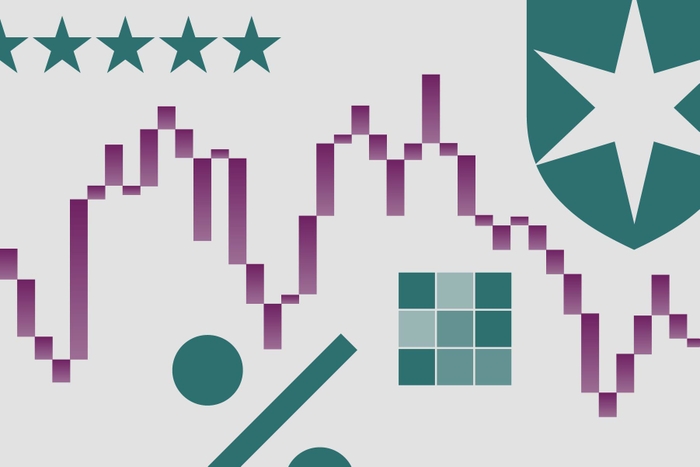Central bank purchases, particularly from the official sector in emerging economies, have been the largest single driver of higher gold prices during the past five years. This development is particularly notable as central banks had been net sellers of bullion since the 1980s. We believe central banks from emerging economies have been buying gold to diversify their foreign exchange reserves, while developed Western countries with large legacy bullion holdings now see gold as a strategic reserve asset and have accordingly halted their gold sales programmes. We think gold holds particular appeal for countries with large U.S. dollar holdings, such as China and OPEC member nations, given gold's historically negative correlation to the greenback. We do not believe central bank buying can maintain its current pace over the long haul, which supports our lower long-term gold price forecast of $1,200 per ounce. Still, we see a number of potential scenarios regarding official sector gold demand over the next several years, some of which contemplate accelerated central bank purchases, that could be very bullish for gold prices in the near to intermediate term.
While the spectacular rise in gold prices over the past decade was aided by many forces, we think the biggest single driver has been increased central bank purchases. Before 2010, central banks were major suppliers of gold on a net basis, selling on average more than 400 tons of gold per year between 2000 and 2009. But 2010 marked the first year in which central banks around the world were net purchasers of gold, buying 87 tons of gold that year, and the trend accelerated in 2011 with official sector demand climbing to 440 tons. Global gold demand increased from 3,800 tons in 2000 to 4,067 tons in 2011.
The increase in gold demand from central banks switching from selling to buying bullion has been the largest component of gold demand growth over the past five years. Indeed, it has outpaced demand growth from the inception of bullion-backed exchange-traded funds during the same period, which many like to cite as being the primary culprit behind the recent bull market in gold. Increased central bank buying has also more than offset declining global jewelry demand.
Central banks, particularly in developed Western economies, hold large stockpiles of gold as legacy assets from prior gold-backed currency regimes, which have since been largely replaced by fiat currencies (monies that are only backed by the promise of the government to honour them). The reign of gold-backed currencies unofficially ended in 1971 when President Nixon discontinued the convertibility between gold and dollar at a fixed rate of $35 per gold ounce. This essentially severed gold's pegging to the dollar (and vice versa), and given the dominance of the U.S. dollar as the global reserve currency, countries with large gold stockpiles saw little reason to continue hoarding the yellow metal. Central banks consistently sold gold between 1995 and 2005 at an average rate of 400-500 tons annually, with much of these sales stemming from the U.S. and European countries (which owned the most gold to start with).
However, since 2006, we have seen gold sales from developed countries slow to a trickle. Meanwhile, central banks of emerging economies such as Russia, China and Thailand have stepped up their bullion purchases in a big way. Not only has the magnitude of gold purchases by central banks increased, but also the participation level has risen, as countries that historically avoided the gold market, such as Mexico and South Korea, made major bullion purchases in 2011.
Why Are Central Banks Buying Gold?
We believe central banks have been purchasing bullion primarily to diversify their foreign exchange reserves. We think gold holds particular appeal for countries attempting to diversify their reserves away from the U.S. dollar, given the negative correlation between the returns for the dollar and gold, as well as the yellow metal's other virtues such as anonymity, ease of storage and the deep liquidity of the bullion market. Indeed, we have seen many of the countries with the largest holdings of U.S. dollars in their foreign exchange reserves leading the charge in purchasing gold. We think the recent sovereign debt crisis in Europe has only whet the official sector's appetite for gold as a diversification asset.
We believe gold and the U.S. dollar are negatively correlated for three main reasons: Gold is priced in dollars on the global market, which means that a weaker dollar causes the yellow metal to be cheaper for foreign buyers; the dollar tends to weaken when U.S. interest rates are low; and a weaker dollar causes gold production costs overseas to increase, setting a higher floor under gold prices.
Given gold's reputation for being an effective hedge against the U.S. dollar, one would expect to see countries with large dollar reserves also to be major investors in the yellow metal. We have seen this play out to a certain extent, as China and the major oil exporting countries, which are two of the five largest holders of U.S. Treasuries, have also been active players in the bullion market during the past several years. China purchased more than 450 tons of gold in 2009, while Saudi Arabia added 180 tons in 2010. Also, other countries with sizable dollar reserves such as Mexico, Russia and Thailand have recently stepped up their gold purchases. We think Japan, as the second-largest holder of U.S. Treasuries behind China, could be contemplating buying bullion. But the main player to watch here is the Chinese central bank, which not only owns more than $1.1 trillion in U.S. Treasuries, but also holds only 1.8% of its foreign exchange reserves in gold even after its recent purchase.
While emerging, non-Western economies like China, Russia, India and Saudi Arabia have been busy purchasing bullion, developed Western economies have brought their gold sales programmes to a halt, with the last major sales occurring in 2009. We think that although the developed Western nations already have sizable gold stockpiles, they are not likely to be major sellers of gold in the near to intermediate term for a number of reasons. For one, many of these countries were badly burned by selling low on gold and failing to benefit from current high prices, and thus may be more careful about parting with their gold bars. More important, holding large amounts of gold can help bolster investor confidence in a country's monetary system. On the other hand, the developed Western countries already own huge tonnages of gold as legacy assets, so we don't think they are likely to be major buyers anytime soon.
The central banks have been snapping up bullion in recent years, sometimes purchasing huge tonnages of gold that can total more than 5% or even 10% of annual mine supply. We think they use three main purchase methods to avoid disrupting the bullion market: trading off-market with other central banks, purchasing gold through third parties such as sovereign wealth funds, and purchasing domestic mine supply before it goes on the global gold market.
The fact that central banks can use the last two purchase methods to make "stealth" purchases of bullion holds interesting implications--it means that actual official sector demand might currently be much larger than the reported figures. After all, China, Saudi Arabia, and any other nations looking to buy gold to diversify their reserves would have an incentive to keep their purchases hidden from the public eye so as to avoid distorting gold prices upward before they can complete their purchase programme. We know that China and Saudi Arabia have made stealth purchases of bullion in the past, so it is reasonable to assume that they will continue to do so as long as they are looking to accumulate the yellow metal.
Implications for Gold Prices
While central bank purchasing has led bullion prices higher during the past several years, we do not think that it can continue to do so over the long run, as gold already constitutes a significant percentage of global official sector reserve assets. However, we do see the possibility of a surge in official sector purchases leading to a bullish price environment for the yellow metal over the next several years.
To a certain extent, the effects of central bank purchases on gold prices have already played out. The huge swing in the past five years, from central banks selling 659 tons in 2005 to purchasing 440 tons in 2011, amounts to well over one quarter of annual gold demand and was the primary catalyst behind the surge in gold prices during this period, in our opinion. This is not factoring in the likely ongoing stealth purchases by various central banks, which only magnifies the drastic increase in official sector demand that has materialised in recent years.
However, in order to drive gold prices even higher, central banks must not only continue to buy gold at the current pace, but also accelerate their purchasing. The absolute demand level from the official sector does not matter to gold prices; rather, it is the change in demand that will ultimately move prices.
In the near term, accelerated central bank purchases are possible, especially from emerging economies such as China that are overweight the U.S. dollar and underweight gold. However, over the long term, we do not regard continued central bank purchases as being sustainable. For one, developed Western countries already have a large portion of their reserves in gold and don't need to do more buying. They could perhaps even resume selling bullion if they can take advantage of higher gold prices without undermining investor confidence through such transactions.
Also, gold bars stored in vaults are not consumed like most commodities. This means that emerging economies can stop purchasing gold once they have reached their target for gold as a percentage of reserves. Global official sector holdings of gold already amount to 13.9% of total reported reserves. This is a significant percentage and suggests that central banks don't have too much work left to do in terms of diversifying their reserves toward the yellow metal. Given that central bank purchases have been one of the largest drivers of gold demand growth over the past five years, any slowing would be quite bearish for gold prices.
Morningstar's lower long-term gold price forecast of $1,200 per ounce factors in such a decay in central bank buying. Our lower long-term gold price forecast also assumes that gold-backed ETF demand will recede from its 2009 highs and jewellery demand will continue its gradual decline on a net global basis. However, given that all-in production costs in the gold mining industry have surged to more than $1,000 per ounce for the highest-cost miners in recent quarters, we think this floor on marginal cost of production will prevent bullion prices from falling too far from recent high levels, over the long run.
While we don't think central bank purchases of bullion can be sustained over the long run, we see a wider range of possibilities that could lead to divergent outcomes for gold prices over the near to intermediate term. Below we outline four scenarios regarding near-term central bank purchases as well as their implications for gold demand and prices.
Central banks return to their traditional role as net suppliers of gold. This scenario assumes that Western developed countries will resume their gold sales while emerging countries stop purchasing bullion. A sharp return to central banks selling roughly 400 tons of gold per year (which is what happened between 1995 and 2005) would have a disastrous effect on near-term gold demand and prices. We do not think this scenario is likely during the next several years because of the shift in the official sector's view of gold as a strategic reserve asset, especially from emerging economies, as well as Western countries' aversion to further reducing their gold stakes.
Central banks slow their bullion purchasing activity but do not return to selling gold. We think this scenario would be more likely to occur because certain emerging countries that are currently buying gold decide to wind down their purchase programmes, not because Western developed economies decide to take advantage of higher gold prices to sell their bullion holdings. Central banks are motivated more by strategic, policy considerations rather than purely by economic rationale. Even a moderate slowing in the official sector's appetite for gold would probably be a headwind for gold demand and prices.
Central banks scramble to accumulate gold over the intermediate term. We do not think this scenario is likely, but it is possible. We can contemplate a scenario in which heightened sovereign debt concerns or an erosion of confidence in the U.S. dollar could prompt central banks to rush into gold as an alternative foreign exchange reserve asset. This would cause an upward spike in gold demand and prices over the near to intermediate term. However, we don't think accelerated purchases of gold can be sustained for long periods because central banks generally accumulate gold to hedge against the U.S. dollar and other foreign currencies rather than have bullion dominate their reserves. In fact, accelerated buying could actually pull forward the eventual decay in official sector demand for gold by allowing central banks to reach their gold percentage targets more quickly.
Central banks maintain current levels of gold purchases. We think this scenario is the most likely, and it best fits with Morningstar's gold price forecast. If central banks sustain current levels of gold purchases, then gold prices will remain around spot levels over the intermediate term, assuming other supply and demand factors hold constant. Once the big buyers stop amassing gold because they have reached their gold percentage target, official sector demand in aggregate will ease, leading to lower gold prices over the long term.
Joung Park is an equity analyst with Morningstar.
























